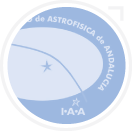Sulfur in the early Martian atmosphere revisited: Experiments with a 3-D Global Climate Model
Volcanic SO2 in the Martian atmosphere has been invoked as a way to create a sustained or transient greenhouse during early Martian history. Many modeling studies have been performed to test the feasibility of this hypothesis, resulting in a range of conclusions, from highly feasible to highly improbable. In this study we perform a wide range of simulations using the 3-D Laboratoire de Météorologie Dynamique Generic Global Climate Model (GCM) in order to place earlier results into context and to explore the sensitivity of model outcomes to parameters such as SO2 mixing ratio, atmospheric H2O content, background atmospheric pressure, and aerosol size, abundance, and composition. We conclude that SO2 is incapable of creating a sustained greenhouse on early Mars, and that even in the absence of aerosols, local and daily temperatures rise above 273 K for only for limited periods with favorable background CO2 pressures. In the presence of even small amounts of aerosols, the surface is dramatically cooled for realistic aerosol sizes. Brief, mildly warm conditions require the co-occurrence of many improbable factors, while cooling is achieved for a wide range of model parameters. Instead of causing warming, sulfur in the Martian atmosphere may have caused substantial cooling, leading to the end of clement climate conditions on early Mars.































